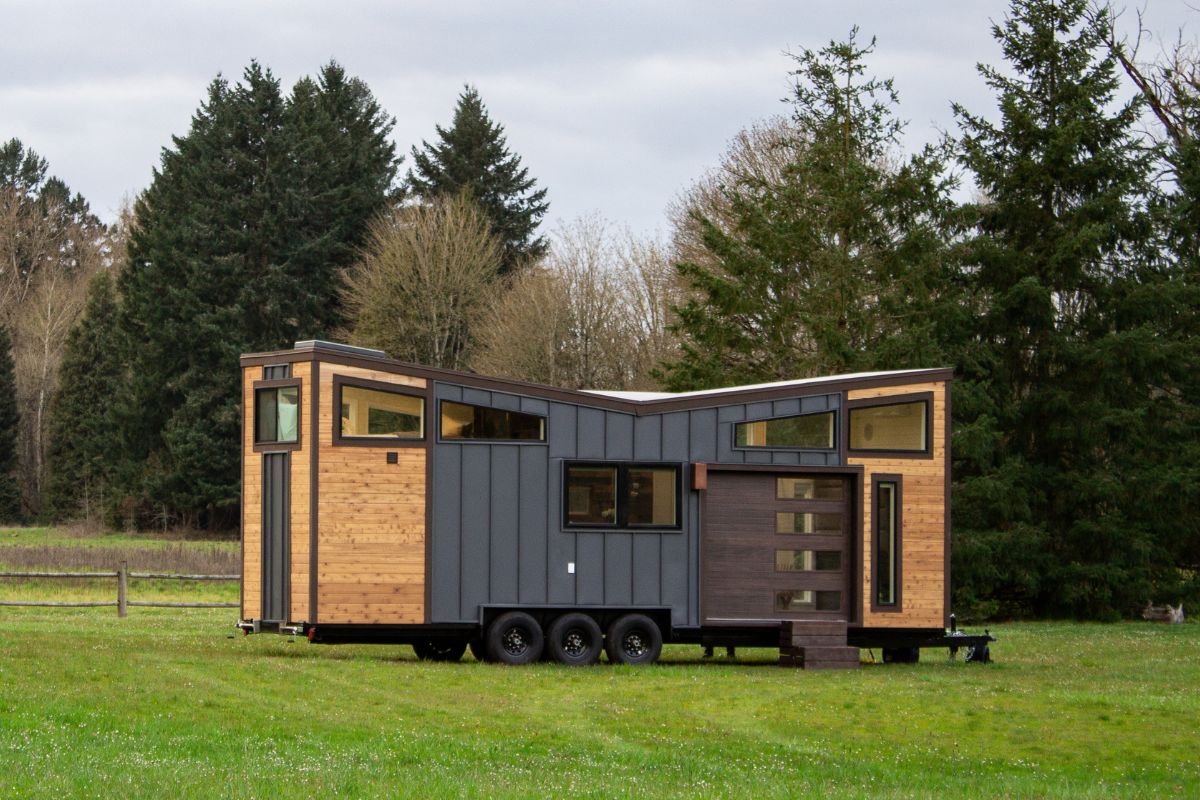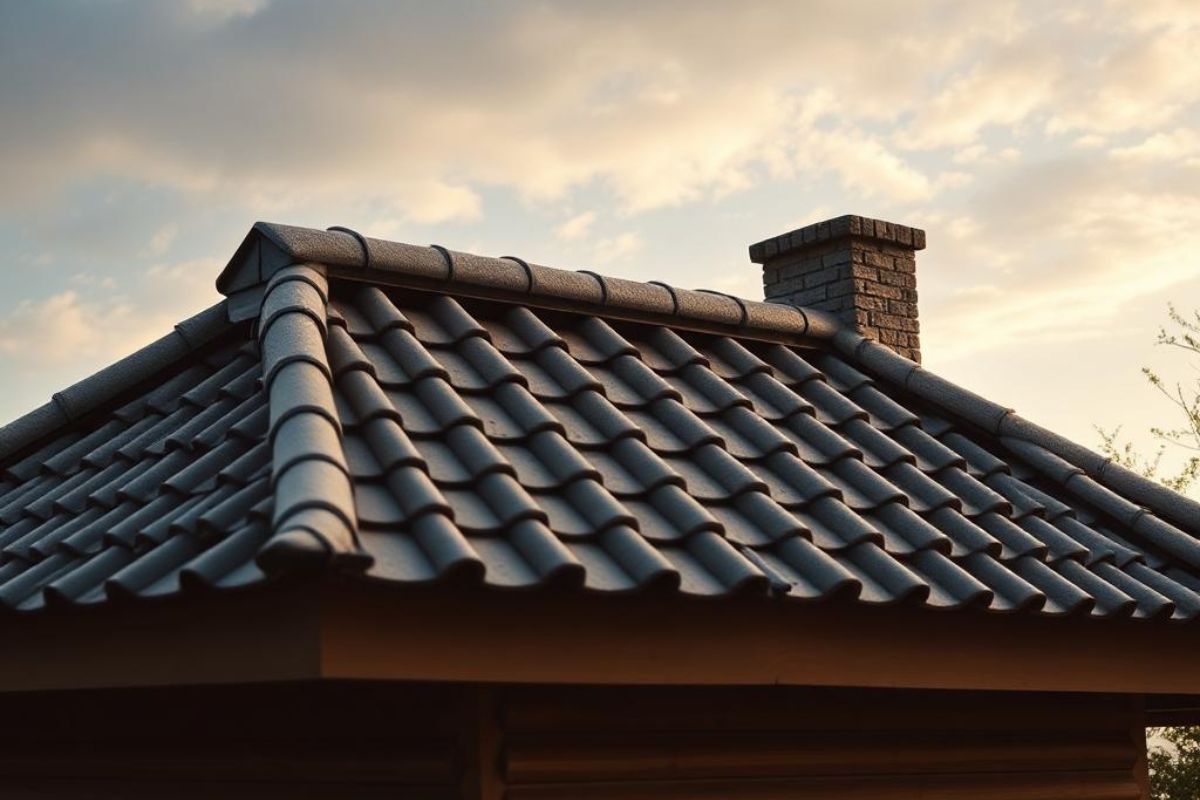You can make your tiny home both eco-friendly and sustainable by integrating renewable energy sources like solar panels and small wind turbines that reduce reliance on traditional power. Consider installing low-flow water fixtures and a greywater system to conserve water effectively. Opt for building materials like reclaimed wood or recycled metal to lessen environmental impact.
Don't forget to incorporate green insulation options such as sheep's wool or recycled cellulose to improve energy efficiency. By adopting these practices, you'll not only diminish your ecological footprint but also enhance the resourcefulness and sustainability of your living space. Exploring further will reveal even more possibilities for your eco-conscious journey.
Utilizing Renewable Energy Sources
Harnessing renewable energy sources is essential for powering your tiny home sustainably. As you commence on this eco-friendly journey, you'll find that solar panels are a popular choice. They're not only cost-effective but also efficient in areas with ample sunlight. By installing a small-scale photovoltaic system, you can generate enough power for your daily needs. This setup typically includes a few panels, a battery for storage, and an inverter, making it an ideal solution for off-grid living.

Wind turbines are another viable option, especially if you're in a windy locale. A small turbine can supplement your energy supply, reducing your reliance on traditional power sources. It's important to check local zoning laws and community guidelines before installing one, as there may be restrictions based on height or noise.
Additionally, consider integrating micro-hydro systems if your tiny home is near a water source. This technology harnesses the flow of water to produce electricity, providing a constant and reliable power supply, unaffected by weather conditions like solar and wind options.
Water Conservation Techniques
After setting up renewable energy systems in your tiny home, it's equally important to focus on water conservation. You'll find that smart water use not only sustains the environment but also minimizes your living expenses. Start by installing low-flow fixtures such as showerheads, faucets, and toilets. These devices can cut your water usage by half without sacrificing performance.
Next, consider harvesting rainwater. This system collects rain from your roof, stores it, and uses it for gardening and, with proper filtration, even for drinking. It's a perfect fit for your tiny home's sustainable ethos. Also, don't overlook the benefits of greywater systems. By reusing water from your sinks and shower, you can irrigate your plants and flush toilets, greatly reducing your fresh water needs.
Lastly, be vigilant about leaks. A dripping faucet or a running toilet can waste thousands of gallons per year. Regular maintenance checks are essential.
Sustainable Building Materials
Shifting focus to the materials that make up your tiny home, it's crucial to choose sustainable options that align with your eco-friendly goals. Opting for renewable resources not only minimizes your environmental footprint but also guarantees durability and health safety.
Firstly, consider using reclaimed wood. This material isn't just robust and visually appealing; it also reduces the demand for virgin timber, thereby conserving forests. You'll give new life to old materials, which adds a unique character to your home without harming the planet.
Next, explore bamboo for flooring and cabinetry. It's one of the fastest-growing plants, making it a top sustainable choice. Bamboo is not only sturdy but also has a clean, modern look that can brighten your tiny home.
Don't overlook recycled metal and glass. These materials are often discarded, but they can be beautifully repurposed into windows, backsplashes, or even structural components. Using these recycled elements helps reduce landfill waste and the energy consumption associated with manufacturing new materials.
Lastly, when it comes to insulation, sheep's wool is an excellent sustainable option. It's natural, renewable, and provides great thermal and acoustic insulation, keeping your tiny home comfortable year-round.

Waste Reduction Strategies
Building on your commitment to sustainability through the materials in your tiny home, let's now focus on reducing waste. Managing waste efficiently is essential in a small space, and you've got several strategies at your disposal.
First, think about composting. A compact, odor-controlled compost bin can transform your kitchen scraps into valuable fertilizer for your plants. It's a simple step that greatly decreases the amount of garbage you produce.
Next, consider your purchasing habits. Opt for products with minimal packaging, or even better, buy in bulk. You'll cut down on the amount of waste you bring into your home and save money in the long run. Don't forget to bring reusable bags and containers when you shop.
Lastly, get creative with your recycling efforts. Set up a well-organized system to sort recyclables and make sure they're clean before disposal. This practice not only supports recycling efficiency but also integrates well into the tiny home ethos of minimalism and functionality.
Green Insulation Options
Choosing the right insulation for your tiny home is essential for both comfort and environmental impact. You'll want to evaluate materials that not only keep your space warm in winter and cool in summer but also have a minimal effect on the planet.

One popular option is sheep's wool insulation. It's natural, renewable, and can regulate humidity while filtering air. Plus, it's easy to install and you're supporting animal-friendly practices.
Another sustainable choice is cotton batts, made from recycled denim. This material is great for noise reduction and doesn't contain harmful irritants often found in fiberglass insulation. It's also treated for fire resistance, making it a safe choice.
If you're looking for something more plant-based, contemplate cork panel insulation. Cork is harvested from the bark of cork oak trees without harming the tree, making it a superb renewable resource. It's naturally fire retardant and resists mold and pests, enhancing its durability.
Lastly, don't overlook recycled cellulose insulation, made from post-consumer paper products. It's one of the most eco-friendly options available, boasting high R-value for effective thermal resistance and is also treated to be fire retardant.
Conclusion
You've explored the essentials for eco-friendly tiny home living, from tapping into renewable energy to conserving water. By choosing sustainable materials and smart waste reduction strategies, you're not just building a home; you're protecting the planet. Don't forget green insulation options to boost your home's efficiency.
Embrace these changes, and you'll not only minimize your ecological footprint but also lead a simpler, more sustainable life. Ready to transform your tiny space into an eco-haven?






Share: